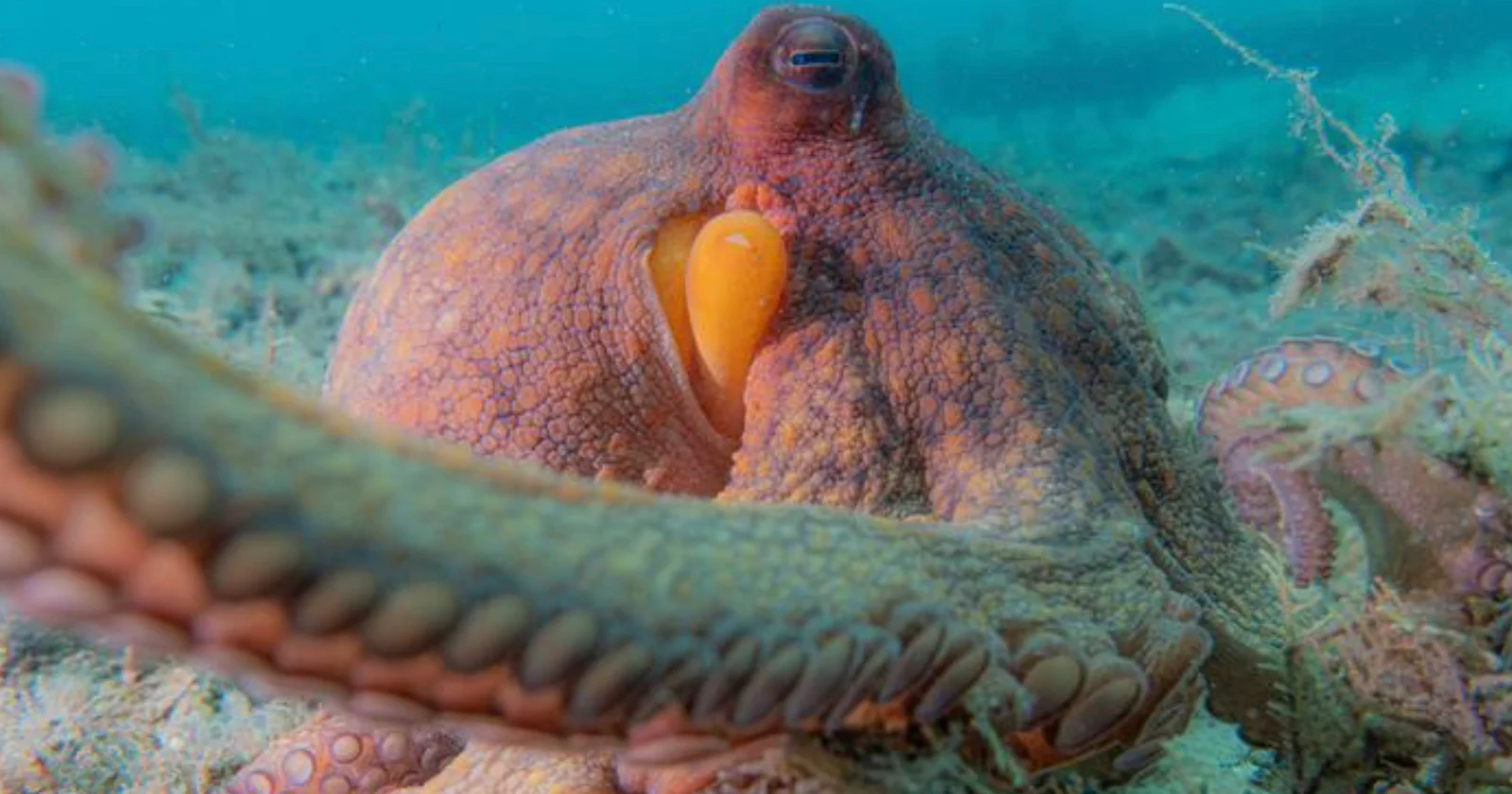
A large-scale analysis of underwater videos revealed how octopuses control their eight arms to carry out some of the most complex movements in the animal kingdom.
The research, led by Florida Atlantic University’s Charles E. Schmidt College of Science in partnership with the Marine Biological Laboratory in Woods Hole, Massachusetts, examined video recordings to better understand how wild octopuses use their limbs in natural settings.
The team reviewed one-minute clips of 25 octopuses filmed between 2007 and 2015 in locations including Spain, South Florida, and the Cayman Islands. Divers captured the animals as they navigated reefs, seagrass beds, and sandy seabeds.
In these clips, octopuses were seen crawling, swimming, standing, reaching, and probing. Scientists then analyzed how each of the eight arms moved during these activities.
According to NBC News, the researchers went through the videos frame by frame, documenting detailed arm motions such as tucking, lowering, and rolling, depending on the activity—whether standing still or shifting rocks. Each minute of video required several hours of analysis.
Underwater Videos Reveal Four Thousand Arm Actions
In total, the team catalogued 3,907 individual arm actions, involving 6,871 separate arm deformations. Movements were broken down by how a limb bent, extended, or retracted, from its base near the head to the tip.
The findings, published in Scientific Reports last week, showed that every arm can carry out all types of actions, but there were clear patterns. The front arms were used more often by octopuses for exploring, while the back arms were more involved in movement.
The study also highlighted the animals’ versatility. A single arm could carry out several motions at once, and different arms could coordinate complex movements together.
“When octopuses move across an open environment, they skillfully use multiple arms to stay camouflaged from predators, such as the moving rock trick or looking like floating seaweed,” Chelsea O. Bennice, Ph.D., lead author and research fellow at FAU’s Marine Laboratory, says in a press release. “Beyond foraging and locomotion, their arm strength and flexibility are essential for building dens, fending off predators, and competing with rival males during mating.”
Researchers believe that their findings may also guide the design of new technologies. Octopuses are often used as models for soft robotics, and this new record of arm movements could provide useful insights for developing medical tools or devices for reaching difficult areas.
Bennice says: “Understanding these natural behaviors not only deepens our knowledge of octopus biology but also opens exciting new avenues in fields like neuroscience, animal behavior, and even soft robotics inspired by these remarkable creatures.”



